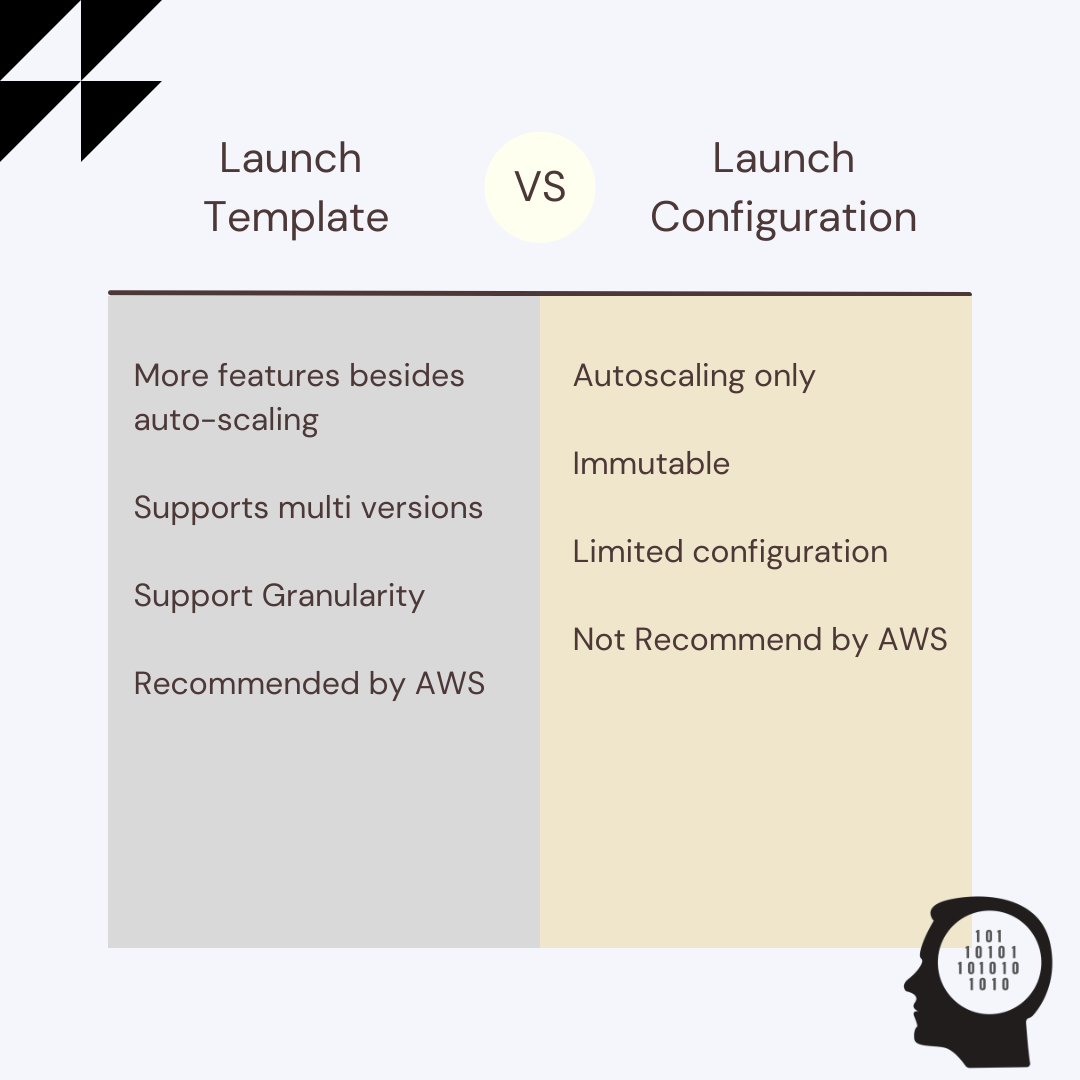Launch Template vs Launch Configuration [Exam Tips]
![Launch Template vs Launch Configuration [Exam Tips]](/wp-content/uploads/sites/5/2021/12/Launch-Template-vs-Launch-Configuration-FeatureImage.png)
In this post, we will discuss Launch Template vs Launch Configuration. And what they are. Finally, to get a view of when we can use one versus the other. Also, focusing on exam tips, for AWS certification.
What is a Launch Template?
A launch template is merely a group of all of the configurations that create and configure an EC2 instance. Likely, you would have already walked through creating one EC2 instance using that EC2 wizard. And that’s wonderful for making your first instance, but if you have to create thousands of instances? Do you really enjoy to be going through that wizard every single time? I don’t, and you probably don’t want to either.
So what the launch template does is step through that wizard and effectively just save the results, creating a template with all configurations in a single place, so when we need that to create a new instance again, we can just push that button. The instance is created precisely as we’ve defined it in that template. If you’ve touched on auto-scaling before, you might think that this launch template looks a lot like a launch configuration. And it’s. So let’s compare the launch template vs a launch configuration.
 Launch Template vs Launch Configuration
Launch Template vs Launch Configuration
Launch Templates represent AWS’s modern approach to instance configuration, offering enhanced functionality and flexibility compared to Launch Configurations. While using Launch Configurations is still technically valid, Launch Templates provide several advantages that make them the preferred choice:
- Broader Application: Launch Templates can be used beyond Auto Scaling, supporting EC2 instance launches, Spot Fleet requests, and Spot Instance requests from a single configuration source.
- Version Control: They support versioning, enabling you to maintain multiple versions of your configuration in one place. This is particularly useful when updating AMIs, modifying user data scripts, or testing new instance configurations.
- Enhanced Flexibility: Launch Templates provide more configuration options and better integration with newer AWS features, including:
- Multiple instance types
- Spot and On-Demand instance mixing
- AWS Systems Manager integration
- Capacity reservation settings
In contrast, Launch Configurations are limited to Auto Scaling use cases and lack versioning capabilities. The comparison table above highlights these key differences and demonstrates why Launch Templates have become the recommended choice for new AWS deployments.
Check our posts related:
Learn How to use AWS KMS via Command Line
Launch templates versioning
To use the launch template versioning, we can just pick which version of that template we would like to apply. And from another side, the launch configuration, it’s unchangeable and doesn’t track changes. But the Launch templates support versioning. So versioning just implies whenever we want to modify it, such as a new image AMI, instance type, new user data, configuration related to network, and after all changes you have done, we still have that in history. So in a quick summary, we prefer to use launch templates and not configurations.
Exam Tips
Note: On the AWS exam, configurations aren’t incorrect, but keep in mind, and always pick an answer that contains launch templates.
What Makes a Template?
It is crucial to comprehend what goes into a launch template. We need to understand that it contains network, security, and instance type information.
Conclusion and Resume
Launch Templates
The most recommended and adaptable method to construct a template.
Launch templates are the most useful, most straightforward, and most flexible.
Launch configurations
Are older. It’s not wrong if you use it.
User Data
Regarding the exam, the launch configuration of those instances typically uses the user data, and that feature is incorporated in the launch template. So with that in mind, if we need to modify the user data because that’s what the question is requesting us to accomplish, it would demand us to keep track of that launch template and then retain the modified user data.
Change
Launch Templates are versioned. We can select one version that we want to deploy. Besides that, when you push modifications, we’ll record that acts as a history list.
Networking
Launch configurations don’t contain the networking information. Your launch templates have.




Comments